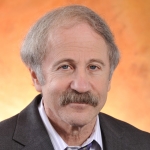Psychiatrist Thomas Szasz Proved Correct: ADHD as Mythological Brain Disease
He didn’t live to see it, but perhaps institutional psychiatry is on the verge of admitting that Attention-deficit/
My late friend, psychiatrist Dr. Thomas S. Szasz, my colleagues and I have been writing about ADHD for decades and decades, writing that it is not a disease but a description of a wide range of behaviors and feelings masquerading as a disease. Whether it is diagnosed as an illness is not a function of chemical-neurological findings, but interpretations of psychologists, psychiatrists, and social workers who are enfranchised to diagnose this non-illness illness.
https://www.cambridge.org/
Vatz, R. E. (1994, July 27). Attention deficit delirium. The Wall Street Journal, p. A lO
https://jamanetwork.com/
A focus herein is also on millions of Americans who have been medicated (drugged) to combat this alleged disease.
Now, a major article has been written by researcher Paul Tough in The New York Times Magazine, titled “Have We Been Thinking About A.D.H.D. All Wrong?” which purports to question the “assumptions about the condition — and how to treat it.”
The extensive article reflects the opposite conclusions of the helping professions regarding this alleged disorder but confirms all of the major objections of Dr. Szasz as well as a vast array of likeminded experts on medicine and social construction of illnesses who over the years have argued that people labelled as sufferers of Attention Deficit Disorder (ADD), later named ADHD, were having “problems in living” (Dr. Szasz’s term), not brain disease.
Let us look at some of the stunning concessions that the extensively researched Times article allows:
A;. The rate of diagnoses of those allegedly with ADHD and prescriptions of stimulant drugs continues to rise, with no educational advantage to the recipients and barely discernible behavioral changes resulting from drug treatment, which has yielded only diminishing returns. The largest increases in diagnoses and prescriptions are now in adults.
B. Major researchers confess their failures in accurate diagnoses as well.
C. Differentiating between those children who are understandably threatened by environmental stimuli and those who have something in their brains causing their anxiety is impossible.
D. “There is no reliable [or valid] biological test for ADHD,” says the article, and the diagnostic criteria in psychiatry’s Diagnostic and Statistical Manual are so general that they cannot be used validly to infer disease (always called “disorders” in the Manual): “Displays poor listening skills;” “Overly talkative;” “Squirms when seated or fidgets with feet/hands.”
E. Whatever success in life or school that follows from prescribed drugs for ADHD can be attributed to the improvement in confidence created by the stimulant drugs.
F. The prescribed drugs for ADHD have too little discussion of contraindications, such as reduced height and the medicines’ addictiveness, and whatever benefits some people do perceive are short-term.
In the end, many of the effects of the “condition” and its “cures” are a manifestation of self-fulfilling prophecy. Telling young people they have problems relating to concentrating and need additional help is school creates children who believe they cannot handle school and should put their energies elsewhere, where they can succeed.
Parents, in particular, should be less credulous than they are, which often leads them to encourage their children to engage in the “necessary” endeavor of taking serious drugs for what Dr. Szasz always claimed were the general difficulties that confront a substantial percentage of humankind.
The stigma that attends taking drugs could be limited if we dispose of the medical model and if we stop prescribing serious Schedule II drugs like Ritalin to children, so many children.
Knowing him as well as I did, I can say that Dr. Szasz thought that more people should be encouraged to face life’s challenges. The victories there will be more satisfying and positively life-changing than relying on invalid medical diagnoses and false pharmacological cures. To Dr. Szasz, all of the concessions made by significant figures in institutional psychiatry regarding ADHD apply mutatis mutandis to many maladaptive behaviors which we categorize as needing professional “treatment.”

Richard E. Vatz https://wp.towson.edu/vatz/ is a Distinguished Professor Emeritus of political rhetoric at Towson University and author of The Only Authentic of Persuasion: the Agenda-Spin Model (Bookwrights House, 2024) and over 200 other works, essays, lectures, and op-eds. He is the benefactor of the Richard E. Vatz Best Debater Award at Towson. The Van Bokkelen Auditorium at Towson University has been named after him.

